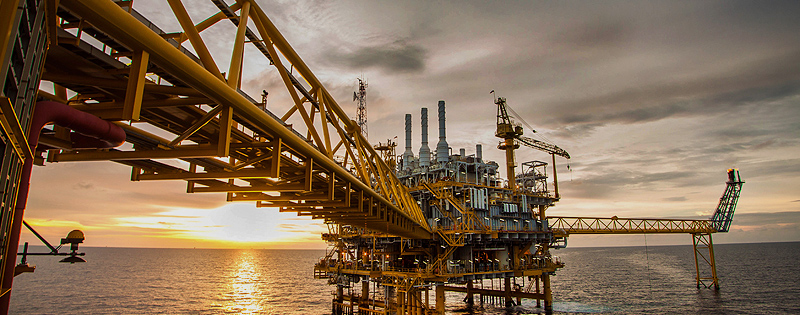Embark on a journey of ceramic excellence with Mechvac Technologies Pvt Ltd’s vacuum pump solutions, meticulously engineered and manufactured in India. Our vacuum pumps are tailored to meet the specific needs of the ceramics industry, offering superior performance, reliability, and efficiency. From clay processing to glazing and firing, our vacuum pumps play a critical role in optimizing ceramic production processes, ensuring precision, quality, and consistency in ceramic manufacturing
Key Applications of Vacuum Pumps in the Ceramic Manufacturing Industry
1. Ceramic Drying Processes
- Drying Kilns: Vacuum pumps are used in ceramic drying kilns to accelerate the removal of moisture from ceramic products. By creating a vacuum environment, moisture evaporates more rapidly from the ceramic materials, reducing drying times and energy consumption. Vacuum-assisted drying ensures uniform drying of ceramics, preventing cracks and distortions while maintaining product quality.
- Slip Casting: In slip casting processes, vacuum pumps are used to remove air bubbles from ceramic slurries or slips before casting. Vacuum de-airing helps in achieving smooth and defect-free castings with consistent density and homogeneity. This is crucial for producing high-quality ceramic products such as sanitaryware, tiles, and tableware.
2. Ceramic Forming and Molding
- Extrusion and Injection Molding: Vacuum pumps are utilized in extrusion and injection molding processes for ceramics to remove air from the material and molds. Vacuum-assisted forming ensures precise shaping and dimensional accuracy of ceramic components, such as bricks, tiles, and technical ceramics. This process enhances the strength and uniformity of ceramic products, making them suitable for diverse industrial applications.
- Powder Compaction: Vacuum pumps are used in the compaction of ceramic powders into molds to produce intricate shapes and parts with high density and strength. Vacuum-assisted powder compaction eliminates voids and ensures consistent material distribution, contributing to the quality and performance of ceramic components used in electronics, aerospace, and medical industries.
3. Ceramic Glazing and Coating
- Glazing Lines: Vacuum pumps play a role in ceramic glazing lines by creating a vacuum to remove excess glaze and air bubbles from ceramic surfaces. This ensures even coverage and adhesion of glazes, enhancing the aesthetic appeal and durability of ceramic tiles, pottery, and decorative items. Vacuum-assisted glazing improves the efficiency and quality of ceramic surface treatments.
- Thin Film Deposition: In advanced ceramic applications, vacuum pumps are used in thin film deposition processes such as Physical Vapor Deposition (PVD) and Chemical Vapor Deposition (CVD). These processes apply thin ceramic coatings to enhance surface properties like hardness, wear resistance, and thermal stability. Vacuum-assisted coating technologies enable precise control over coating thickness and composition, making ceramics suitable for cutting-edge applications in electronics, optics, and aerospace.
4. Ceramic Firing and Sintering
- High-Temperature Sintering: Vacuum pumps are essential in high-temperature sintering furnaces used to consolidate ceramic powders into solid products through atomic diffusion. By creating a controlled vacuum environment, sintering processes remove trapped gases and impurities, ensuring dense and durable ceramic materials. Vacuum-assisted sintering enhances the mechanical strength, thermal stability, and chemical resistance of ceramics for industrial components and structural applications.
- Reduction Firing: In reduction firing processes, vacuum pumps are used to create reducing atmospheres that prevent oxidation and enhance the color and properties of ceramic glazes. Vacuum-assisted reduction firing is employed in pottery and ceramic art to achieve unique surface effects and colors that are not possible in standard firing environments.
5. Ceramic Waste Management and Recycling
- Vacuum Extraction Systems: Vacuum pumps are used in ceramic waste management systems to extract and transport dust, debris, and waste materials generated during manufacturing processes. Vacuum-assisted extraction systems improve workplace cleanliness, reduce airborne contaminants, and facilitate the recycling of ceramic scraps and by-products. This supports sustainable practices and resource efficiency in ceramic production facilities.
- Reclaiming Slip and Glaze: Vacuum pumps assist in reclaiming and recycling ceramic slip and glaze materials by removing excess moisture and air. This process reduces waste and production costs while maintaining the quality and consistency of ceramic formulations. Vacuum-assisted recycling systems contribute to environmental sustainability and resource conservation in the ceramic manufacturing industry.
6. Ceramic Inspection and Quality Control
- Vacuum Leak Testing: Vacuum pumps are used in leak testing systems to check the integrity of ceramic components such as pipes, valves, and seals. By creating a vacuum and monitoring pressure changes, leak detection systems identify defects and ensure that ceramic products meet stringent quality standards. Vacuum-assisted leak testing enhances the reliability and performance of ceramic components used in industrial applications.
- Porosity Testing: In ceramics, vacuum pumps are employed in porosity testing systems to evaluate the density and structural integrity of materials. Vacuum-assisted porosity testing measures the rate of gas absorption in ceramics, providing valuable data for quality control and process optimization. This helps manufacturers assess the performance and durability of ceramic products under operating conditions.
7. Ceramic Research and Development
- Vacuum Extrusion and Forming: Vacuum pumps support research and development activities in ceramics by enabling advanced extrusion and forming techniques. Researchers use vacuum-assisted processes to explore new materials, shapes, and functionalities in ceramics for specialized applications in biomedical implants, aerospace components, and energy storage devices.
- Material Synthesis and Purification: Vacuum pumps facilitate material synthesis and purification processes in ceramic research, such as vacuum calcination and purification of raw materials. These processes remove impurities and control chemical reactions under vacuum conditions, producing high-purity ceramics with tailored properties for scientific investigations and technological advancements.
The MT Series is an excellent choice ceramic industry, offering a range of benefits that can greatly enhance your ceramic industry operations:
MT Series benefits: –
Reduce Energy Consumption: The MT Series is designed with energy efficiency in mind, helping to reduce energy consumption during operation. By minimizing energy usage, you can lower your utility costs and contribute to sustainability efforts.
Save on Maintenance Costs: With its robust construction and reliable performance, the MT Series requires minimal maintenance compared to other vacuum pumps. This helps you save on maintenance costs while ensuring consistent operation and longevity of the equipment.
Maximize Operational Reliability: The MT Series is known for its exceptional reliability and durability, providing uninterrupted operation even in demanding packaging environments. With dependable performance, you can minimize downtime and maintain productivity levels.
Increase Production Output: By streamlining the vacuum packaging process and optimizing efficiency, the MT Series helps increase production output. Its high-performance capabilities enable faster evacuation of air from packaging, allowing you to meet higher production demands.
Protect the Environment: The MT Series is designed with environmental sustainability in mind. Its energy-efficient operation and reduced maintenance requirements contribute to lower carbon emissions and environmental impact. By choosing the MT Series, you’re taking proactive steps towards protecting the environment.
MT Series images





